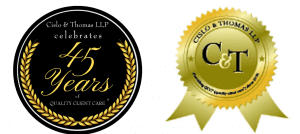In the fashion world, licensing can be a great way to expand the possibilities of your business. Though it offers great opportunities, this option is not without risks and you should invest time to carefully think about a potential licensing agreement. Use the following checklists when evaluating a licensing opportunity:
Forms of fashion licensing:
- Licensing-out a brand name, logo, product design, or fabric design into an associated product category
- Licensing a brand name to accessory manufacturers and perfume makers
- Licensing print or textile design copyrights for use on furniture, luggage, or other products
- Collaborating with a well-known brand in another industry to create a new product-line (wallpaper, for example)
Potential Advantages of Fashion Licensing:
- Gain status and credibility with a different group of customers (for example, the successful collaboration between Moschino and McDonalds in 2014, which sold out handbags, iPhone cases, sweaters and backpacks)
- Increase brand recognition
- Target new audience
- Expand into new categories and geographies
- Test a new market (for example, Stella McCartney’s collaboration with Gap Kids before launching Stella McCartney Kids)
- Increase profile and brand awareness
- Revenue without manufacturing or marketing risks (for example, H&M’s collaborations with fashion designers)
- Producing innovative and attractive fashion items
Potential Risks of Fashion Licensing:
- Damage or dilution of the brand (for example, Calvin Klein sued Warnaco in 2000 for diluting the Calvin Klein brand by producing sub-standard products and trading with discounted retailers)
- Sending a mixed message through collaboration with an ill-matched brand
- Restricting the granting of future licenses or breaching earlier licenses
- Extensive contracts and potentially protracted negotiations
- Works being tied up and never used
Advice for Fashion Licensing:
- Choose a partner carefully
- Choose a complementary brand
- Ensure that the terms of the license are clear about the scope of the license, including duration, categories of goods licensed, and applicable territories
- Make certain which rights have already been granted to third parties
- Discuss key terms of the collaboration at the earliest stage possible
- Decide early how ownership of the intellectual property will be held
- Work out which party is responsible for registering intellectual property



